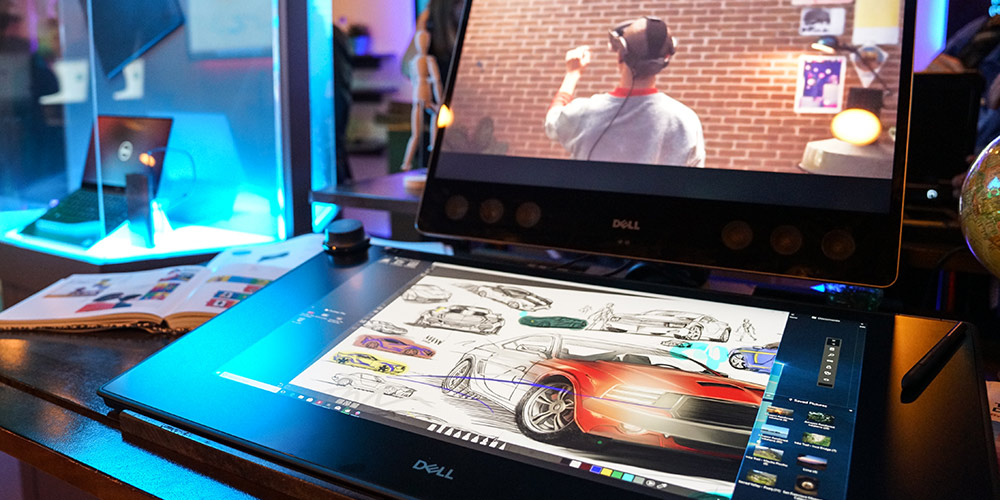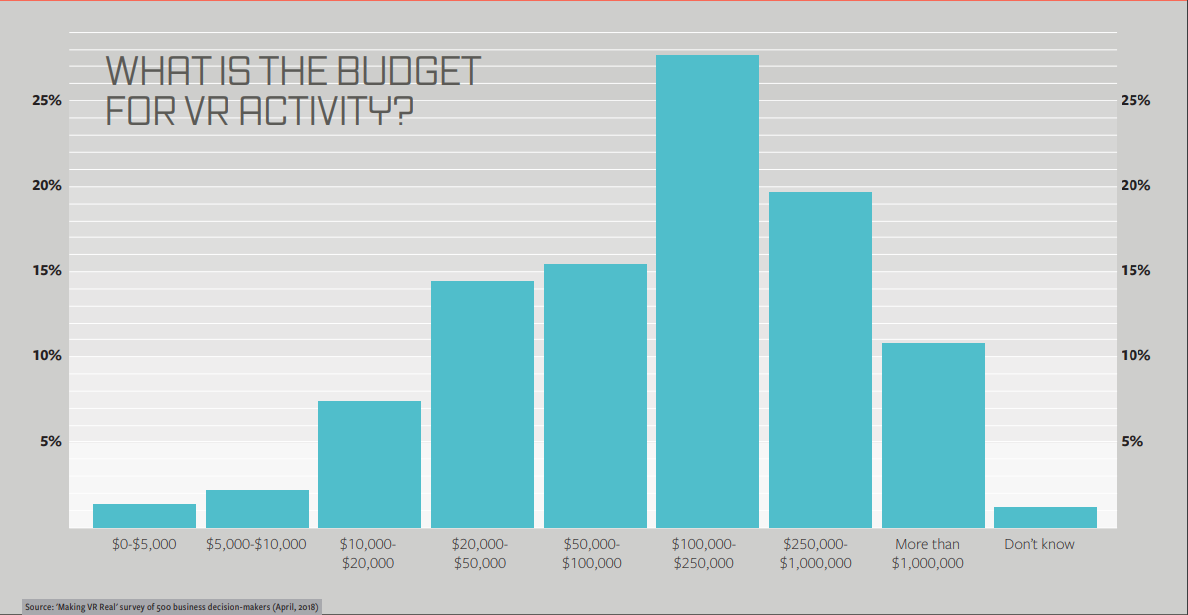Recently on Direct2Dell, I shared how National Geographic Explorer Martin Edström brought the world’s first virtual reality (VR) experience with lions to life, but you may be wondering how VR could be used in the business world.

To help reveal real-world implications of using VR within your business, Qualtrics – in association with Dell – has surveyed 500 business decision makers around the world who were either currently working on a VR project, or who had already completed one.
The resulting “Making VR Real” report showcases the potential of virtual reality in 2018 and provides a unique insight into one of the world’s most innovative industries.
“In this report, we hope to paint a true picture of the varied business cases for VR, by undertaking the broadest piece of business-focused VR research to date, whilst also shining a light on how VR is being used in the real-world today,” said Jack Davies, head of content at Qualtrics EMEA.
They found that VR is contributing a huge amount to the economies of the different countries they surveyed, but that 52 percent of those working on VR projects still see it as emerging tech.
Why are they choosing to use it? Fifty-eight percent said they agreed or strongly agreed that VR offered benefits that no other medium did. The majority also felt that it showcased their own innovative capabilities and demonstrated leadership in their industry.
Some of those surveyed include our customers Jaguar Land Rover and Framestore. Framestore uses Dell Precision workstations to bring their customers’ stories to life, including our own Dell Technologies story. And Jaguar Land Rover launched their first fully electric SUV, the Jaguar i-Pace at a VR press conference powered by Dell Precision workstations.
That event was so well-received that technology analyst Rob Enderle said it even led him to sign up to buy one. He added: “Dell, HTC, and Jaguar are changing not only how you buy cars but how you design, build, and buy them.”
That’s because Jaguar Land Rover also created a VR experience for the sales process in their showrooms and 58 percent of retailers they surveyed said it added value.
“Having VR more integrated into the sales process is something we need to work on for future projects,” said Mel Simkiss, global retail environment manager at Jaguar Land Rover, in the “Making VR Real” report. “What would be great is a customer comes in, having configured the car at home, and they are then issued a code which we can use to demo the car they’ve configured using VR. Then we can help them order it, there and then, in the showroom. We’re a way off just now, but ultimately that’s the goal.”
The “Making VR Real” report also includes case studies from Make Real, a UK-based team that makes immersive digital products, and 10 lessons they learned working with several clients.
I won’t give them all away here (download the report for that), but the first lesson was to start small. Begin with a small budget — that is more acceptable to those who have financial sign-off — to create a prototype or proof of concept piece of content that has one or two clear business objectives, or learning outcome goals defined.
This survey found that just over 25 percent of the projects respondents worked on had a budget of $100,000-$250,000. But as you can see in the chart below, many more were accomplished for less than that.

And while Framestore has experience with Hollywood-size budgets, and VR being used for primarily marketing and public relations purposes, they’re starting to see a lot of products being developed (for profit) outside of the entertainment industry – especially in healthcare.
“Personally, I’m excited about how VR can be used in areas like education and healthcare,” said Christine Cattano, global head of VR at Framestore, in the report. “We’ve been dabbling a bit here – but some of the products and R&D projects that are currently out there are pretty mindblowing, I think those are the types of things that will start to move the needle for the general public on the true potential of AR and VR tech.”
For more survey results, and insights from interviews with a broad cross-section of VR experts, from artists, to agencies, to clients, and startups, download “Making VR Real.”